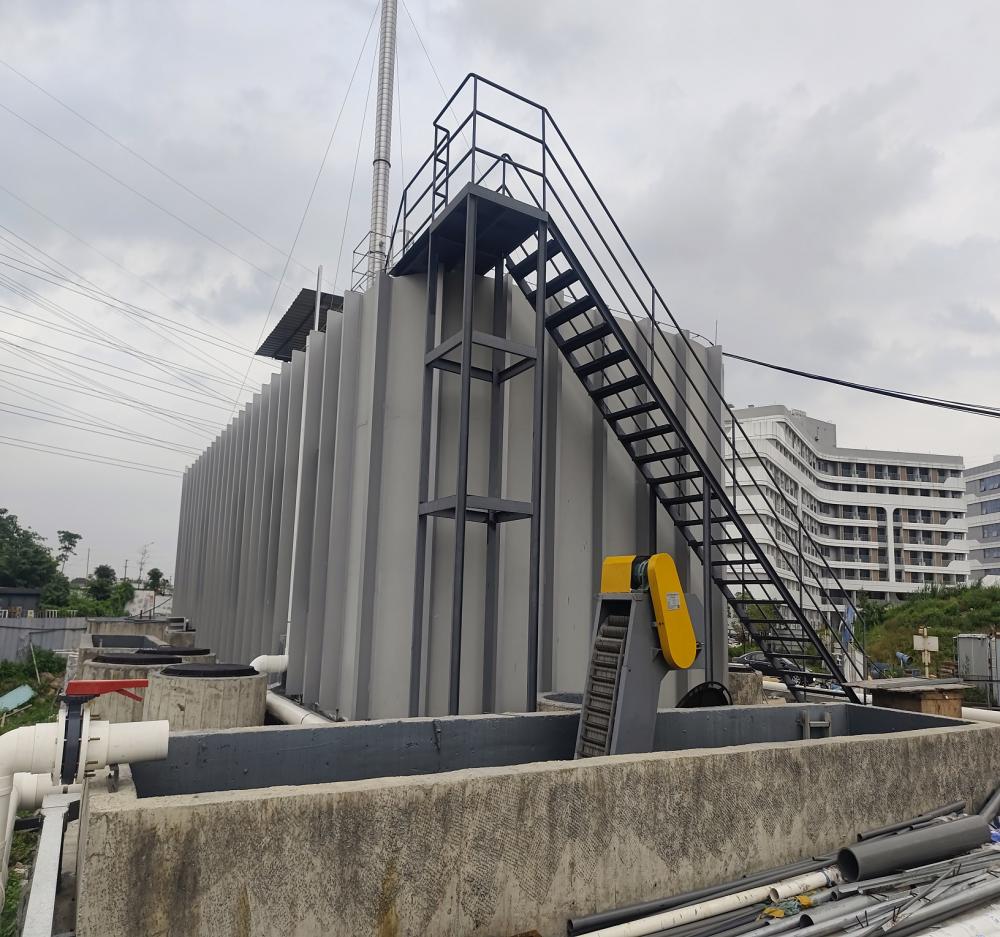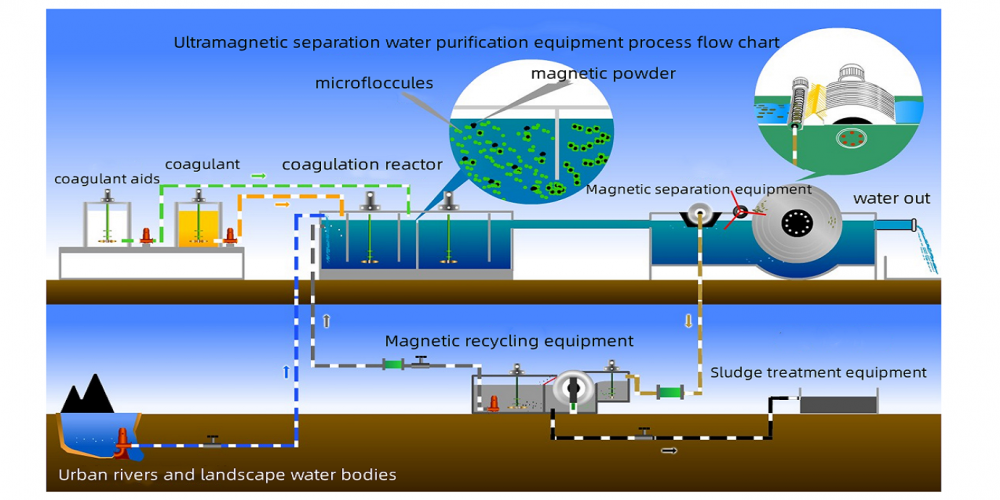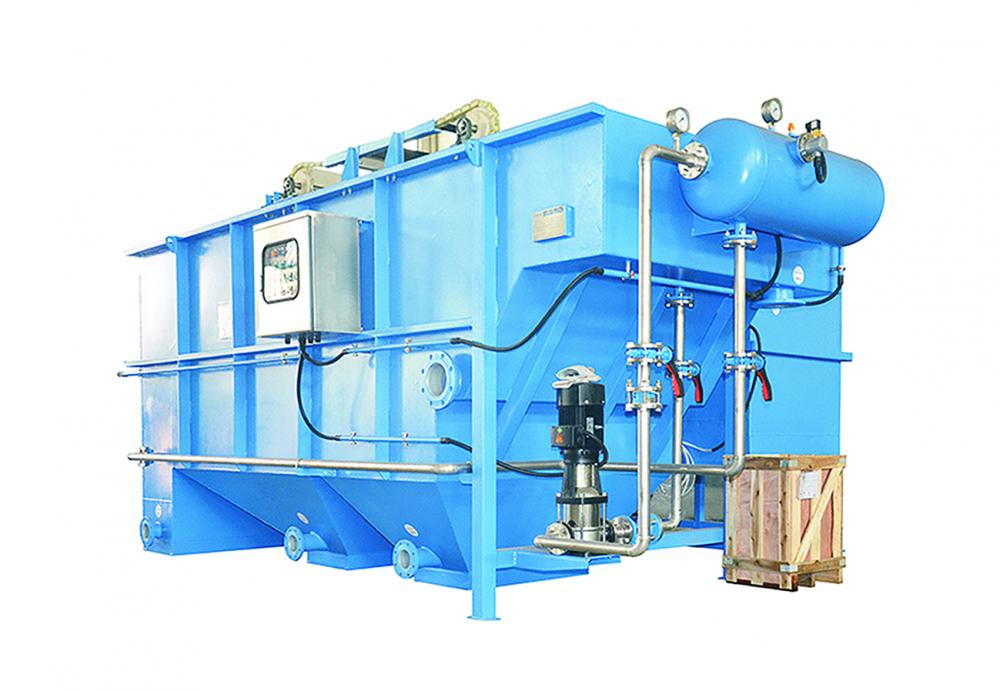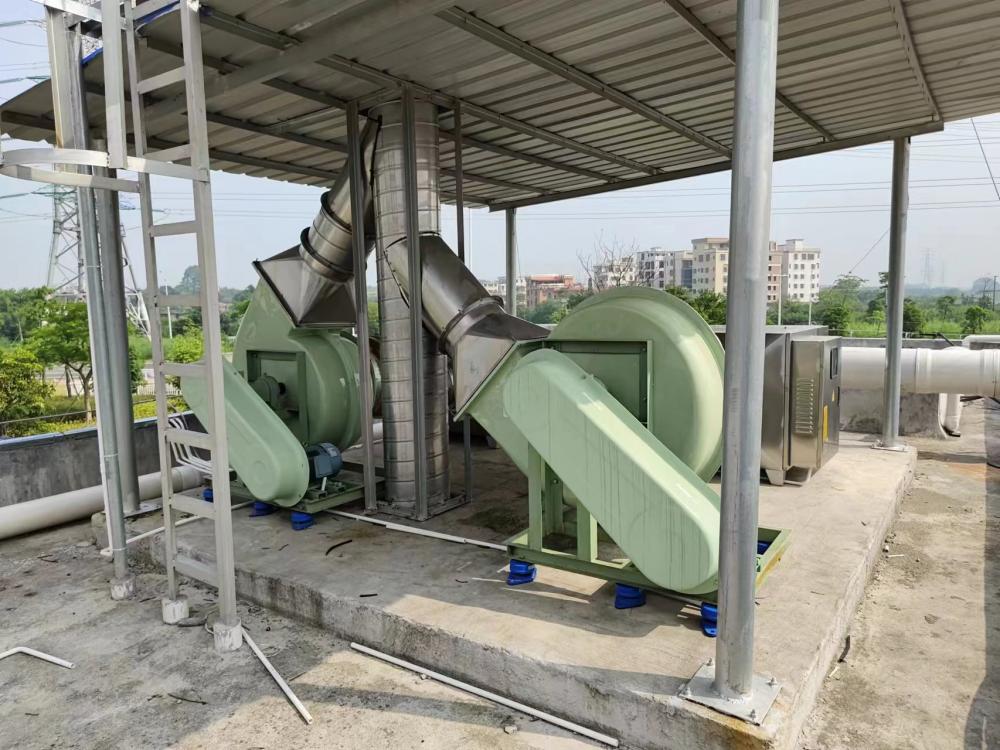What are the ways of recycling industrial sewage?
January 08, 2024
1, industrial sewage recycling treatment process
Industrial sewage is the main component of municipal sewage, which contains more heavy metals. If not treated, it will seriously pollute the surrounding environment. The recycling of industrial sewage can not only reduce sewage pollution, but also improve the utilization rate of resources and help to build a resource-saving society. The treatment process of industrial sewage reuse mainly includes: First, the quality of industrial sewage should be analyzed, and the appropriate treatment method should be selected according to the water quality. Secondly, in order to make the quality of sewage meet the water standard, it must be treated in two stages. The process is divided into four stages. The first stage is micro-flocculation treatment, mainly filtering and disinfecting sewage. The second stage is coagulation treatment, which is mainly to filter and disinfect the precipitated sewage. The third stage is the immersion biological filter treatment, and then continue disinfection; The latter stage is biological contact oxidation treatment. After disinfection, after coagulation, precipitation, filtration, to meet the water consumption standard, to achieve the purpose of sewage reuse.
If you have sewage need to be treated, you can contact us, our company produces a variety of Sewage Treatment Equipment, can be customized according to your requirements, design sewage treatment program, welcome new and old users to come to discuss cooperation.
 2, the way of recycling industrial sewage
Industrial sewage recycling methods are mainly divided into the following two categories: (1) Decentralized recycling, mainly used in a single or multiple buildings, that is, through the construction of water systems to recover the industrial sewage generated by the surrounding buildings. This application model is mainly targeted, that is, it can be treated according to different objects and water quality, which is conducive to improving economic benefits. (2) Centralized recycling. This recycling method mainly takes the city as the object, mainly uses the city's sewage treatment plant to deeply treat the sewage, and then transfers the water resources that can be reused after treatment to the user for reuse.
According to the scope of service, reclaimed water systems can be divided into three categories: industrial reclaimed water systems, regional reclaimed water systems and urban reclaimed water systems. Industrial water system refers to the establishment of water system in the factory. Due to the complexity of the sewage to be treated, such treatment stations are usually built in relatively remote places, such as basements. The recycled water after treatment is mainly used for toilet flushing, car washing and road cleaning. Regional reclaimed water systems refer to reclaimed water systems established in industrial development zones and other places. The reclaimed water in this area collects a large amount of raw water and is relatively light in pollution, including sewage from sewage treatment plants, relatively clean drainage in industries, and drainage in residential areas. Both of these methods are decentralized recycling methods. Urban water system, commonly known as sewage recovery system, is a relatively centralized sewage recovery system established by the whole city as the treatment object. The sewage collected by the system is the domestic sewage of the whole city, which is then treated and used in industry.
2, the way of recycling industrial sewage
Industrial sewage recycling methods are mainly divided into the following two categories: (1) Decentralized recycling, mainly used in a single or multiple buildings, that is, through the construction of water systems to recover the industrial sewage generated by the surrounding buildings. This application model is mainly targeted, that is, it can be treated according to different objects and water quality, which is conducive to improving economic benefits. (2) Centralized recycling. This recycling method mainly takes the city as the object, mainly uses the city's sewage treatment plant to deeply treat the sewage, and then transfers the water resources that can be reused after treatment to the user for reuse.
According to the scope of service, reclaimed water systems can be divided into three categories: industrial reclaimed water systems, regional reclaimed water systems and urban reclaimed water systems. Industrial water system refers to the establishment of water system in the factory. Due to the complexity of the sewage to be treated, such treatment stations are usually built in relatively remote places, such as basements. The recycled water after treatment is mainly used for toilet flushing, car washing and road cleaning. Regional reclaimed water systems refer to reclaimed water systems established in industrial development zones and other places. The reclaimed water in this area collects a large amount of raw water and is relatively light in pollution, including sewage from sewage treatment plants, relatively clean drainage in industries, and drainage in residential areas. Both of these methods are decentralized recycling methods. Urban water system, commonly known as sewage recovery system, is a relatively centralized sewage recovery system established by the whole city as the treatment object. The sewage collected by the system is the domestic sewage of the whole city, which is then treated and used in industry.
 3, decentralized engineering sewage and centralized industrial sewage recycling planning
Decentralized engineering wastewater recovery is mainly used in single buildings. However, due to the expansion of the size of the city, the discharge of sewage generated by the buildings has increased correspondingly. Therefore, in order to reduce the discharge of sewage and reduce the pressure on the sewage treatment plant, many buildings will build their own unique engineering sewage station to treat the sewage, and then recycle the sewage or transport it to the municipal pipe network. Centralized industrial wastewater recovery mainly uses multiple sewage treatment plants to treat municipal wastewater. Different sewage treatment plants treat wastewater from different sources and different regions, and the wastewater treated by different sewage treatment plants should have different uses.
With the rapid development of industrial enterprises, the problem of industrial water pollution has gradually intensified. In order to complete the plan of building a green and environmentally friendly city, the technicians involved in the relevant work need to strive to improve the relevant technology of industrial sewage treatment. Employees also need to further improve environmental awareness, and industrial sewage treatment devices are installed in the project. Nowadays, people are paying more and more attention to the quality of industrial wastewater treatment. Only by increasing the ways of recycling industrial sewage can we effectively build a resource-saving society.
3, decentralized engineering sewage and centralized industrial sewage recycling planning
Decentralized engineering wastewater recovery is mainly used in single buildings. However, due to the expansion of the size of the city, the discharge of sewage generated by the buildings has increased correspondingly. Therefore, in order to reduce the discharge of sewage and reduce the pressure on the sewage treatment plant, many buildings will build their own unique engineering sewage station to treat the sewage, and then recycle the sewage or transport it to the municipal pipe network. Centralized industrial wastewater recovery mainly uses multiple sewage treatment plants to treat municipal wastewater. Different sewage treatment plants treat wastewater from different sources and different regions, and the wastewater treated by different sewage treatment plants should have different uses.
With the rapid development of industrial enterprises, the problem of industrial water pollution has gradually intensified. In order to complete the plan of building a green and environmentally friendly city, the technicians involved in the relevant work need to strive to improve the relevant technology of industrial sewage treatment. Employees also need to further improve environmental awareness, and industrial sewage treatment devices are installed in the project. Nowadays, people are paying more and more attention to the quality of industrial wastewater treatment. Only by increasing the ways of recycling industrial sewage can we effectively build a resource-saving society.
Conclusion: Yajieyuan,founded in 2000,after more than 20 years of development,our company has become a well-known "IoT+"water treatment equipment research and development,design, manufacturing and service enterprises,covering:Medical Water Purification Equipment (Water For Scientific Research Laboratories),Campus Direct Drinking Water Equipment,Laboratory Water Purification Equipment,Business Direct Drinking Water Equipment,Sewage Treatment Equipment,Emergency Water Purification Equipment.A professional company integrating scientific research, design, production, installation and service.










